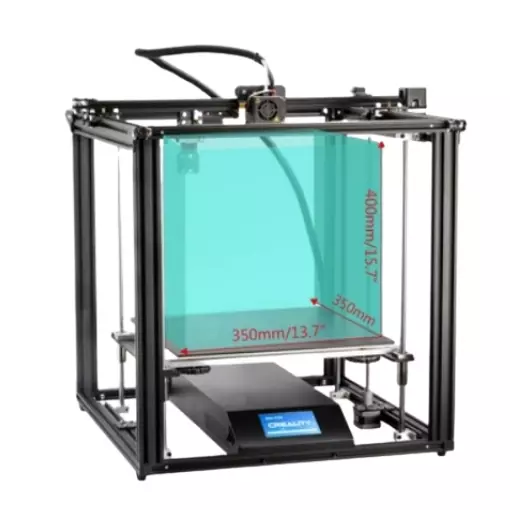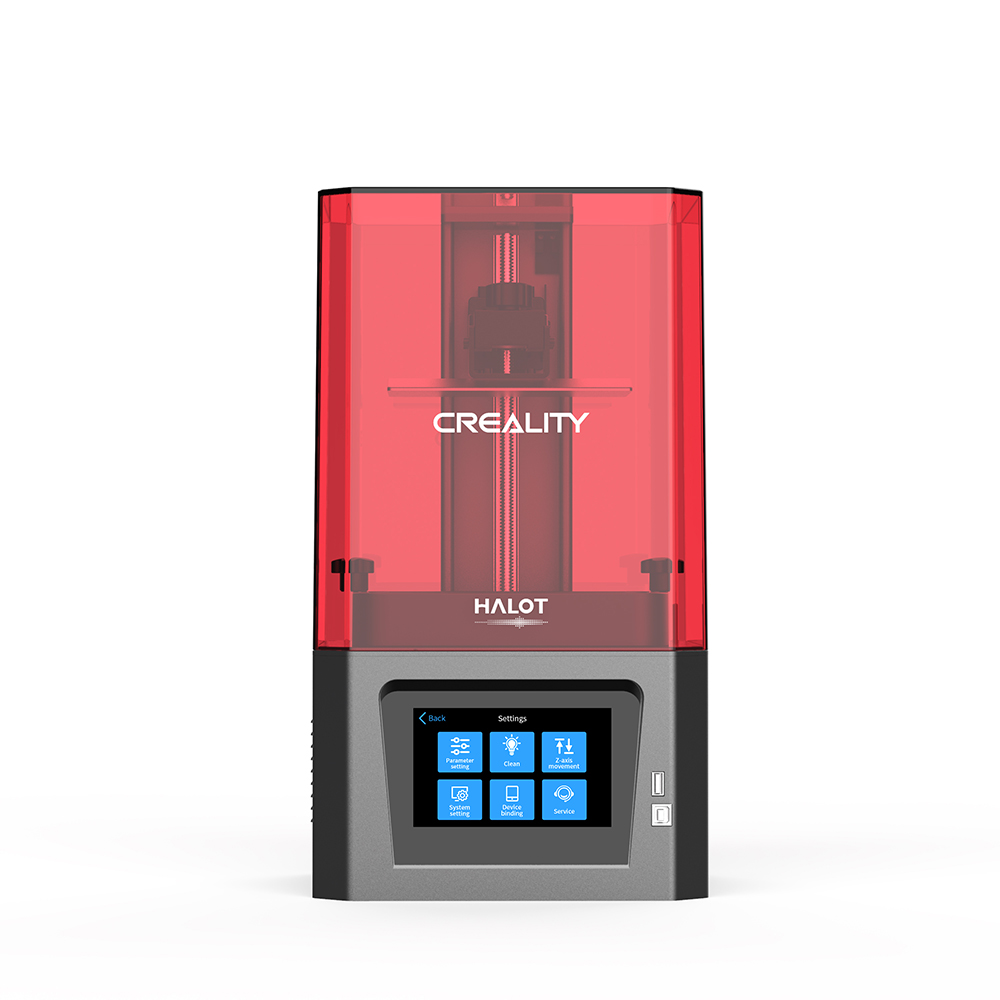Compare Ender 5 Plus vs Ender 3 S1 vs Halot One
Comparison between the best 3D printers
Choose the best 3D printer at the best price. The cheapest 3D printers are here.
Buy a 3D printer here with 3D Fila.
 |
 |
 |
|
| Model | Ender 5 Plus[BUY Ender 5 Plus] |
Ender 3 S1[BUY Ender 3 S1] |
Halot One |
| Estimated price | $599,00 | $399,00 | $250,00 |
| Fabricante | Creality 3D | Creality 3D | Creality 3D |
| Release Year | 2019 | 2021 | 2021 |
| Print Volume [mm] | 350x350x400 | 220x220x270 | 127x80x160 |
| Printer Size [mm] | 632x619x666 | 455x490x625 | 221x221x404 |
| Weight [kg] | 18,2 | 9,1 | 7,1 |
| Power Loss Recovery | YES | YES | NO |
| Maximum Resolution [mm] | 0,1 | 0,05 | 2k |
| Processor | 32 bits | ||
| Display | Touchscreen TFT 4,3'' | Display 4,3'' | |
| Power Supply | 24V / 504W | ||
| Connectivity | SD / USB | SD / USB | |
| Operating systems | Windows, Mac, Linux | Windows, Mac, Linux | Windows, Mac, Linux |
| Date of registration in the system | 2021-04-14 | 2023-03-28 | 2022-10-11 |
| Release date | 2019 | 2021 | 2021 |
| Extra features | The Ender 5 Plus offers a large print volume (350x350x400 mm) and fast assembly. It includes a BLTouch sensor, but with range limitations. It stands out for its dimensional accuracy, although it requires adjustments to the slicer settings. Despite the noise, its integrated design saves space, and includes features such as a filament sensor and power resumption. Ideal for large projects, it requires refinement in the settings for high-quality prints. | The Creality Ender 3 S1 printer stands out for its easy assembly and quiet operation. It has automatic bed leveling and a direct drive system, providing high-quality prints. The design is sleek, with flat cables in mesh sleeves and a magnetic bed. The Creality Sprite extruder is lightweight and developed in-house, supporting a maximum nozzle temperature of 260 degrees. It includes a filament run-out sensor and power loss recovery, with a dual Z-axis for greater support and stability. The build plate is flexible steel with PC coating, and the printer supports a wide variety of filaments. | Crealitys Halot-One printer stands out with several innovative features. It has a high-resolution touchscreen, providing an intuitive and responsive interface. Its quiet printing capability is remarkable, ideal for environments where noise is a concern. Assembly and setup are simple, with automatic functions facilitating quick start. Among its features, remote monitoring and adjustments via the Creality Cloud app stand out, simplifying remote print management. Replacing the FEP in the resin vat is easy, and the printer even includes extra FEP sheets. Top cover removal detection increases safety by automatically pausing printing. In addition, its integral light source promises high uniformity, optimizing print quality. |
| Support for multiple colors and materials (AMS and CFS) | NO | NO | NO |
Notes * |
|||
| Cost-benefit | 6 / 10 | 7 / 10 | 8 / 10 |
| Hardware | 2 / 10 | 2.4 / 10 | 0.6 / 10 |
| Screen | . | . | . |
| Print volume | 4 / 10 | 3 / 10 | 3 / 10 |
| Performance | 1 / 10 | 1 / 10 | 9 / 10 |
| [BUY Ender 5 Plus] | [BUY Ender 3 S1] |
Conclusion |
| **Conclusion** When comparing the Ender 5 Plus, Ender 3 S1, and Halot One 3D printers, each model provides distinct advantages and is suited for different user needs and budgets. The **Ender 5 Plus** emerges as the ideal choice for serious hobbyists or professionals who prioritize a large print volume and dimensional accuracy. Despite its higher price point and the requirement for some adjustments to achieve optimal print quality, it excels in handling large projects and incorporates useful features like power loss recovery and a filament sensor. The **Ender 3 S1** presents a compelling mid-range option with excellent value for money. It is known for its ease of assembly, quiet operation, and automatic bed leveling, making it suitable for users who desire quality prints without a steep learning curve. It balances price and performance well, making it an attractive choice for both beginners and experienced makers. On the other hand, the **Halot One**, while the most economical option, is mainly designed for those focused on cutting-edge features in a compact format rather than high print volume. It offers advanced functionalities like remote monitoring and a user-friendly touchscreen interface. However, its smaller print volume and lack of power recovery features may limit its appeal for larger projects. Ultimately, the choice among these three printers hinges on specific needs: for large-scale projects and precision, the Ender 5 Plus is optimal; for versatility and ease of use, the Ender 3 S1 is an excellent value; and for budget-conscious users who prioritize innovation, the Halot One is a worthy consideration. |

